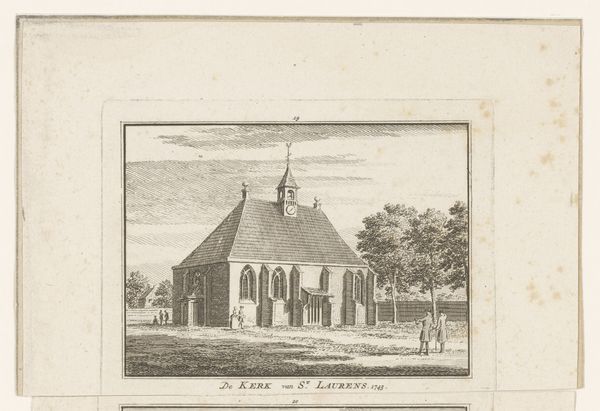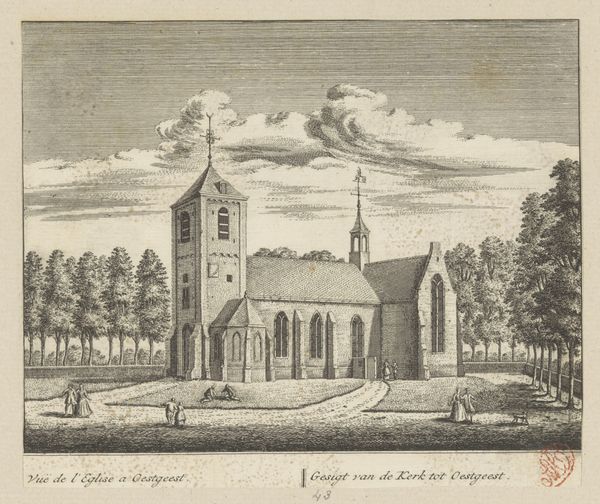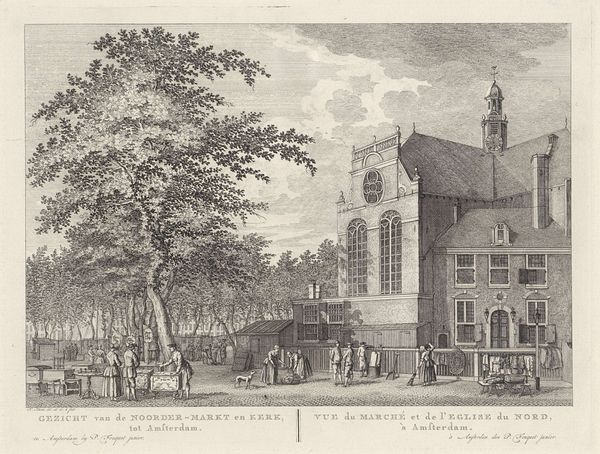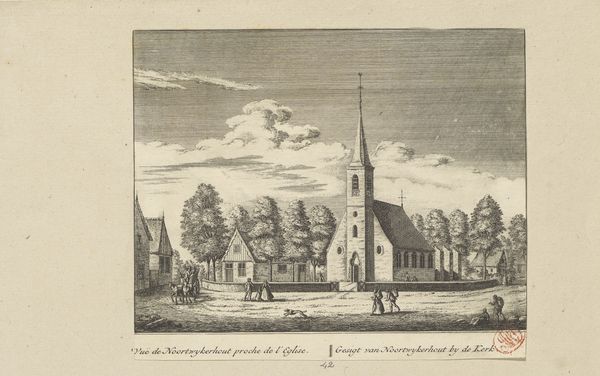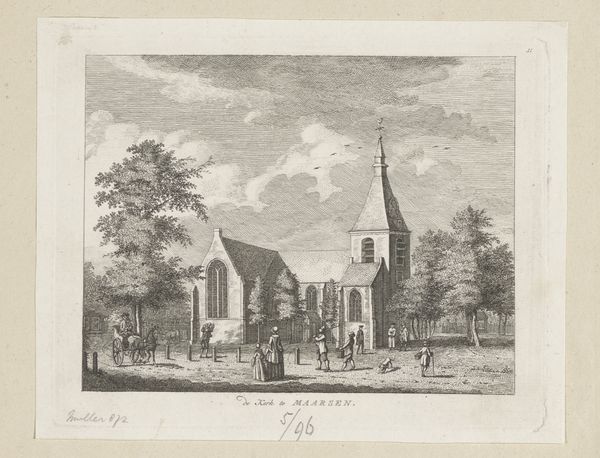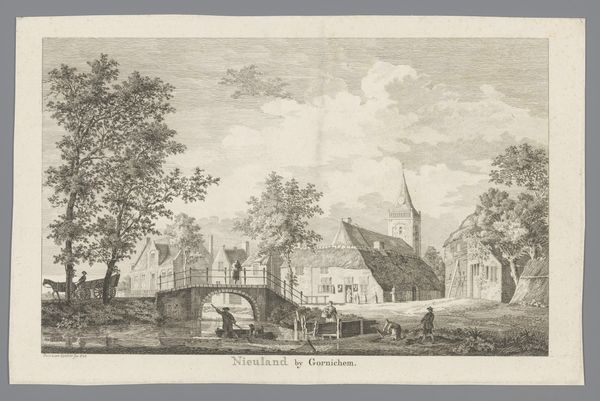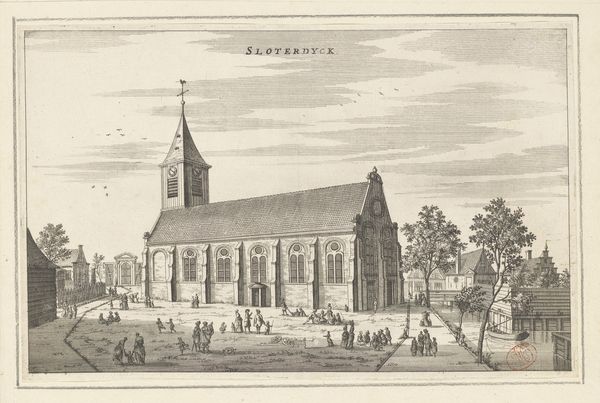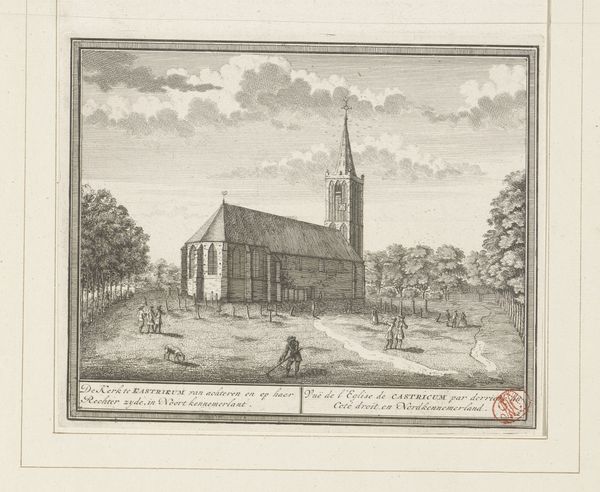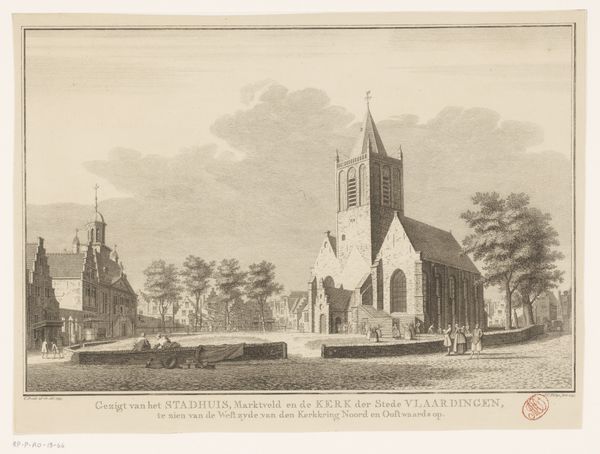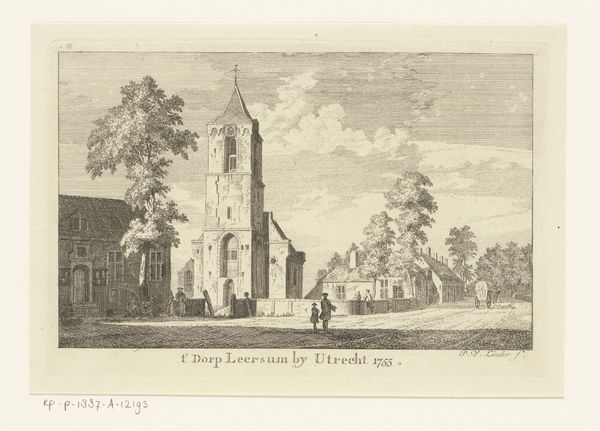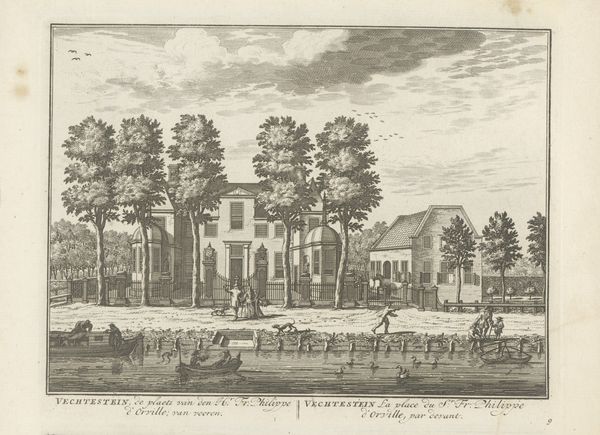
print, etching, engraving, architecture
#
baroque
#
dutch-golden-age
# print
#
etching
#
landscape
#
cityscape
#
engraving
#
architecture
Dimensions: height 161 mm, width 206 mm
Copyright: Rijks Museum: Open Domain
Curator: Hendrik Spilman created this detailed etching and engraving titled "Gezicht op de Janskerk en de wacht te Utrecht," or "View of the Janskerk and the Guard in Utrecht," sometime between 1744 and 1758. It’s currently held in the Rijksmuseum. Editor: It's remarkably serene, wouldn’t you agree? Despite the presence of what seems to be a military regiment, there’s a quietness conveyed by the linear perspective and delicate shading. Curator: Indeed. Spilman masterfully employs line to create depth, guiding the eye towards the imposing architecture of the Janskerk. Consider how the artist's marks define not only the contours of the church and its surroundings but also suggest the very texture of the brick and foliage. Editor: What intrigues me is the implied narrative. The soldiers lined up suggest a society under watch, yet the couple strolling with their dog hints at everyday life continuing regardless. Perhaps the artist wanted to say something about the church being complicit with such military surveillance. Curator: Possibly, but I am more interested in the careful juxtaposition of organic and inorganic forms—the rigidity of the church's façade contrasted against the naturalism of the surrounding trees, its design rooted in baroque sensibility, albeit a decidedly Dutch Golden Age version. Look at how the light gently diffuses through the leaves. Editor: I read more into the human presence than light diffusion, given how power and its instruments affect daily experience. And also, look at the periphery where marginal figures such as the couple or people sat at the end of the row also suggest how even surveillance allows people to live life with slight breaches of space for themselves. Curator: It is through such strategic choices in composition that Spilman elevates a simple cityscape into a nuanced observation of spatial and architectural relationships. It is this balance, this deliberate order, that defines the essence of the work. Editor: I still see a tension humming just beneath the surface, how the church, even today, has historical association of oppressing dissident religious views. Seeing the guard standing next to the church does not sit easy with me. But this is just a quick take.
Comments
No comments
Be the first to comment and join the conversation on the ultimate creative platform.
